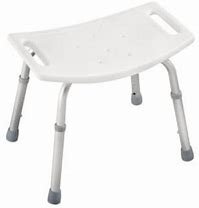Ad Blocker Detected
Our website is made possible by displaying online advertisements to our visitors. Please consider supporting us by disabling your ad blocker.

Are you looking for a practical and comfortable solution to ensure the safety of your elderly loved one while bathing? Choosing the right bath seat can make all the difference in providing them with a secure and enjoyable bathing experience. In this article, we will guide you through the key factors to consider when selecting a bath seat for an elderly person. From the importance of stability and adjustability to the different types of seats available, you’ll gain valuable insights that will help you make an informed decision and enhance the bathing experience for your loved one. So, let’s get started on finding the perfect bath seat!
Consider the Needs and Abilities of the Elderly Person
When choosing a bath seat for an elderly person, it is crucial to consider their specific needs and abilities. Start by evaluating their mobility and balance. Determine if they have any difficulty moving around or maintaining their balance, as this will play a role in selecting the appropriate bath seat. Additionally, assess any specific health conditions or limitations the individual may have. For example, if they have arthritis, a bath seat with armrests may provide additional support. It’s also important to determine the weight-bearing capacity of the individual to ensure that the chosen bath seat can adequately support them during use.
Types of Bath Seats
There are several types of bath seats available on the market, each designed to meet different needs and preferences. Understanding the options will help you make an informed decision.
Standard Bath Chair
A standard bath chair is a simple and straightforward option. It typically features a moulded plastic seat with drainage holes and rubberized feet for stability. This type of bath seat is suitable for individuals who have moderate mobility and balance.
Transfer Bench
A transfer bench is a versatile option that allows the user to sit both inside and outside the bathtub or shower. It typically consists of a long seat with one end resting outside the tub and the other inside. This design enables the user to slide from outside to inside without having to lift their legs over the side of the tub. Transfer benches are ideal for individuals with limited mobility or those who need assistance in transferring in and out of the bathtub.
Swivel Bath Seat
A swivel bath seat offers added convenience and ease of use. It features a rotating seat that allows the user to pivot in and out of the tub effortlessly. This type of bath seat is beneficial for individuals with limited mobility and flexibility, as it reduces the strain of getting in and out of the bathtub.
Wall-Mounted Shower Seat
A wall-mounted shower seat is a permanent fixture that provides a sturdy and secure seating option. It is typically attached to the shower wall and can be folded up when not in use. This type of bath seat is suitable for individuals who require a more stable and permanent solution.
Rolling Shower Chair
A rolling shower chair is equipped with wheels, allowing for easy movement within the bathroom. It often comes with a padded seat, backrest, and armrests for added comfort. This type of bath seat is ideal for individuals who have limited mobility and require assistance in getting around.

Size and Weight Capacity
Before purchasing a bath seat, it is important to measure the dimensions of the bathtub or shower area. Consider the available space and ensure the bath seat can fit comfortably without obstructing other fixtures or walls. Additionally, check the weight capacity of the seat to ensure it can adequately support the user. It’s essential to choose a bath seat that can safely accommodate the individual’s weight to prevent any accidents or injuries.
Safety Features
Safety is paramount when selecting a bath seat for an elderly person. Look for the following safety features to ensure their well-being:
Non-slip surface or material
To prevent slips and falls, choose a bath seat with a non-slip surface or material. This will provide the user with stability and reduce the risk of accidents.
Rubberized or suction cup feet
Bath seats with rubberized or suction cup feet offer additional stability by securely gripping the bathtub or shower floor. These features help prevent the seat from sliding or moving during use, providing a secure bathing experience.
Secure and stable construction
Ensure that the bath seat has a secure and stable construction. Look for models made from high-quality materials and check for any visible signs of weakness or instability.
Backrest and armrests for added support
Consider a bath seat with a backrest and armrests for added support and comfort. These features can provide stability and aid in maintaining a proper sitting posture.
Safety belts or straps
Some bath seats come with safety belts or straps that can be fastened around the user to provide additional security. These can be beneficial for individuals who may require extra support or assistance during bathing.
Comfort and Convenience
Comfort is essential when choosing a bath seat, as it contributes to a pleasant bathing experience. Look for the following features to ensure maximum comfort and convenience:
Padded seat and backrest
Opt for a bath seat with a padded seat and backrest to provide cushioning and support. The padding can help alleviate discomfort and pressure, ensuring the individual feels comfortable while bathing.
Adjustable height settings
Choose a bath seat with adjustable height settings to accommodate different individuals and bathtub sizes. This feature allows for customization, ensuring the seat is at the optimal height for the user.
Ergonomic design for comfort
Look for bath seats with an ergonomic design that contours to the body’s natural curves. This enhances comfort and promotes proper posture while bathing.
Width and depth of the seat
Consider the width and depth of the seat when making your selection. Ensure it provides enough space for the individual to sit comfortably without feeling cramped or restricted.
Portability and ease of installation
Consider the portability and ease of installation of the bath seat. If it needs to be moved frequently or used in different locations, choose a lightweight and easily transportable option. Similarly, ensure the installation process is straightforward and does not require extensive modifications to the bathroom.
Ease of Cleaning and Maintenance
To ensure the longevity and cleanliness of the bath seat, consider the following factors related to ease of cleaning and maintenance:
Materials that are resistant to mould and mildew
Choose a bath seat made from materials that are resistant to mould and mildew. This will prevent the growth of bacteria and maintain a hygienic bathing environment.
Smooth surfaces for easy wiping
Select a bath seat with smooth surfaces that are easy to wipe clean. This will simplify the cleaning process and save time and effort.
Removable parts for cleaning
Check if the bath seat has any removable parts that can be easily detached for cleaning. This will allow for thorough cleaning and prevent any buildup of dirt or debris in hard-to-reach areas.
Durable and long-lasting construction
Opt for a bath seat that is made from durable and long-lasting materials. This will ensure the seat remains in good condition for an extended period and reduces the need for frequent replacements or repairs.
Consider the Bathroom Layout and Setup
When choosing a bath seat, it is essential to consider the bathroom layout and setup. Evaluate the accessibility of the bathtub or shower area and consider any obstructions or space limitations. Take into account the proximity to grab bars or handrails that may provide additional support for the individual. Examine the plumbing and fixtures to ensure compatibility with the chosen bath seat.
Read Reviews and Seek Recommendations
To make an informed decision, it is helpful to read customer reviews online. Research various bath seat models and consider the feedback and experiences of other users. Additionally, ask for recommendations from healthcare professionals who may have expertise in assisting elderly individuals with bathing. Seek input from other caregivers or family members who have previously purchased bath seats. Their firsthand experiences can provide valuable insights and help guide your decision-making process.
Cost and Budgetary Considerations
Determine a budget range for the bath seat and compare prices from different retailers or online stores. While cost is a factor, it is important to also consider the quality and durability of the product. Keep in mind any additional costs for accessories or modifications that may be required. Evaluate the overall cost-effectiveness and longevity of the bath seat to ensure you are making a wise investment.
Consider Additional Accessories or Features
When selecting a bath seat for an elderly person, consider any additional accessories or features that may enhance their bathing experience. Some options include:
Attachable showerhead holder
An attachable showerhead holder can provide convenience for individuals who may have difficulty holding or maneuvering the showerhead themselves.
Storage pouch or compartments
Look for a bath seat with a storage pouch or compartments to keep bathing essentials within reach. This can be especially useful for individuals who require easy access to toiletries or personal items.
Handlebars or grips for extra support
Choose a bath seat that features handlebars or grips for extra support. These can assist individuals in maintaining their balance and provide a secure handhold while bathing.
Adjustable leg heights
Consider a bath seat with adjustable leg heights to accommodate different individuals or desired heights. This feature allows for customization and ensures optimal comfort and support.
Anti-tip design
An anti-tip design provides stability and prevents the bath seat from tipping over during use. This feature is crucial for individuals who may have limited mobility or difficulty maintaining their balance.
In conclusion, selecting the right bath seat for an elderly person involves considering their specific needs, abilities, and restrictions. Evaluate different types of bath seats, ensuring they provide the necessary safety features, comfort, and convenience. Consider the size of the seat and its weight capacity to ensure it fits in the available space and can support the user adequately. Seek recommendations, read reviews, and consider the bathroom layout and setup. Lastly, factor in cost, additional accessories or features, and ease of cleaning and maintenance. By carefully considering each aspect, you can choose a bath seat that meets the individual’s needs and enhances their bathing experience.



